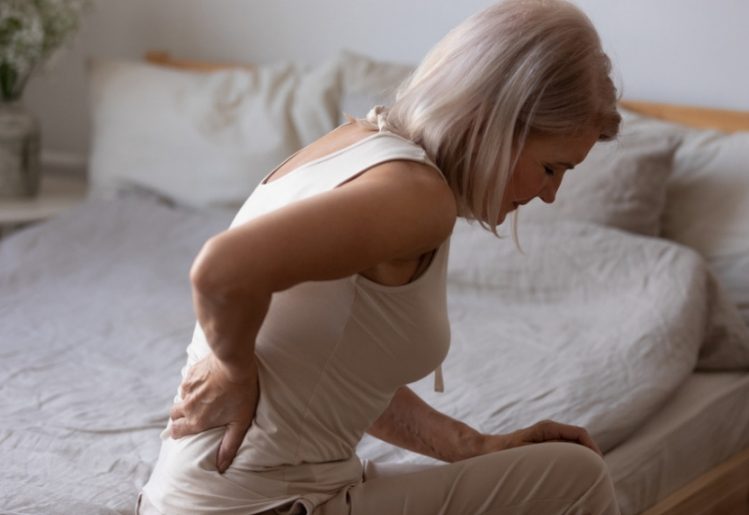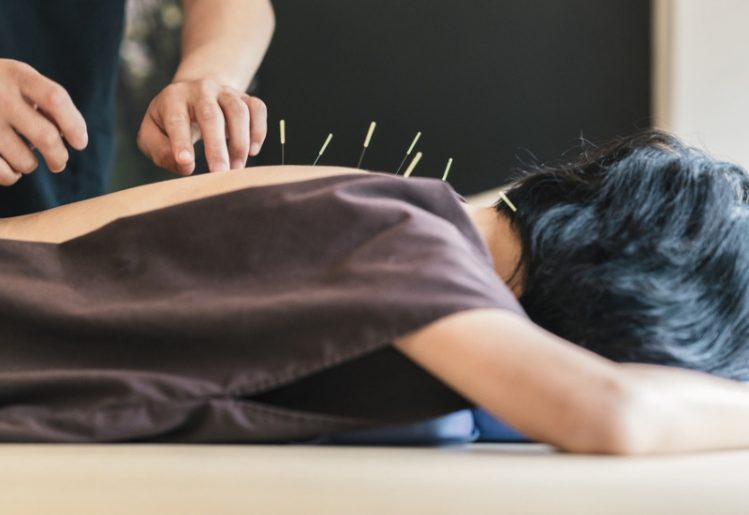People with osteoporosis experience a loss in bone density as the body absorbs more bone tissue without replacing it. This loss of bone mass is an ongoing process that leaves the bones porous and especially weak, so it becomes extremely easy to break certain bones in the body. The bones that are more commonly at risk of breaking include the hip bones, wrist and ankle joints and the spinal vertebrae. According to new studies, air pollution increases osteoporosis risk and may be partly to blame for the growing number of women battling this condition.
Osteoporosis Symptoms and Risk Factors
 It can be difficult for someone with osteoporosis to recognize that they suffer from the condition, because the only noticeable symptoms involve the breaking of bones. In extreme cases, something as simple as a sneeze can cause a bone fracture in the wrist or elsewhere. Breaks in the wrists and hips may be more easily observed, while fractures that occur to the spinal vertebrae can go unnoticed. An affected spinal vertebrae can result in a change of posture, or in clothes that no longer fit properly, so it’s important to pay attention to these changes. Anyone who experiences the onset of unexplained pain or discomfort should see a doctor as soon as possible, especially if they have a greater risk of developing osteoporosis.
It can be difficult for someone with osteoporosis to recognize that they suffer from the condition, because the only noticeable symptoms involve the breaking of bones. In extreme cases, something as simple as a sneeze can cause a bone fracture in the wrist or elsewhere. Breaks in the wrists and hips may be more easily observed, while fractures that occur to the spinal vertebrae can go unnoticed. An affected spinal vertebrae can result in a change of posture, or in clothes that no longer fit properly, so it’s important to pay attention to these changes. Anyone who experiences the onset of unexplained pain or discomfort should see a doctor as soon as possible, especially if they have a greater risk of developing osteoporosis.
The body breaks down bones and replaces bone tissue in an ongoing process, which peaks as people reach their mid 20s. Once people get into their 30s and 40s, bone density gradually decreases and, in some cases, bone loss will become more significant. This process often affects post-menopausal women more severely than any other group, although older men are also at risk. Women face the greatest risk, because estrogen protects them against bone loss and menopause inhibits the production of that hormone.
Additionally, osteoporosis more commonly affects white and Asian people. Research has found that taller people (those over 5’7″) face a greater risk. Especially thin adults, or those who are under 125 pounds, also face a greater risk. Finally, people who come from a family with a history of the disease, or those with a history of bone fractures, are more likely to develop the condition. Certain dietary choices have also been linked to a higher risk of osteoporosis.
New Research Suggests Air Pollution Increases Osteoporosis Risk
Recent research that was conducted at Barcelona Institute for Global Health may have discovered a new risk factor for developing osteoporosis by examining the effects that air pollution has on the bones. There were 3,717 subjects involved in the study, including 1,711 women, and the volunteers were recruited from up to 28 villages throughout India. The researchers determined the quality of the air in each village by measuring the existence of carbon and fine particulate matter, the result of car exhaust fumes and other sources of air pollution. The study also accounted for the type of fuel participants used in cooking their meals.
To determine whether air pollution increases osteoporosis risk, the researchers also examined each participant’s bone density by testing their lumbar spines and left hip bones. The study did reveal a correlation between greater exposure to fine particles and lower bone density. The study’s author, Dr. Otavio Ranzani, believes the decreased bone mass was caused by the oxidative stress that the pollution caused after it was inhaled. He also suggests the polluted air increased inflammation, which contributed to advanced bone loss. The researchers added that bone loss results from air pollution across multiple economic levels and in every geographical location.
The Risks Associated With Osteoporosis Medications
While there are medications that doctors can prescribe to protect bone health, they also produce some adverse side effects that in some cases may defeat the purpose of taking them. For example, bisphosphonates slow the absorption of old bone tissue and help build up bone density and strength. However, studies have found that broken femurs are common among those who take these medications.
Parathyroid hormone drugs are also controversial treatments for osteoporosis. The doses are injected every day for up to two years and help to build up new bone tissue in the body. However, in tests on mice, it was found that administering the treatments for more than two years resulted in the development of bone cancer. Researchers are still unclear on what effects long-term use would have on human subjects.
Human monoclonal antibodies prevent additional bone loss and slow the advancement of osteoporosis. Unfortunately, reduced blood flow to the jawbone results in osteonecrosis, which is a condition in which the bone breaks down. This treatment also results in atypical fractures of the femur.
Estrogen replacement therapy has been a standard treatment for osteoporosis for several years. In addition to helping to protect and restore bone, it also helps reduce the symptoms of menopause. The long term use of the treatment has unfortunately been linked to some adverse side effects, such as an increased risk for breast cancer and cardiovascular events.
Calcitonin is an older drug that’s rarely used anymore. This is because the other treatments listed here have proven more effective. Additionally, Calcitonin increases the risk of certain types of cancer.
How Can You Protect Against Osteoporosis Naturally?
It may be true that air pollution increases osteoporosis risk, but what can you do to protect yourself naturally, aside from minimizing your exposure to airborne pollutants? Fortunately, a variety of ways to protect your bone health have been shown to be effective.
Red Clover
This natural plant is believed to have a similar effect to estrogen on the body. As a result, it may help promote bone health and strength when taken regularly.
 Soy
Soy
Products made from soy, such as tofu and soy milk, contain isoflavones, which are compounds that simulate estrogen’s effects. Eating foods derived from soy may help strengthen and rebuild bone tissue.
Dietary Supplements
You can also find natural ingredients that help protect the bones in certain high-quality dietary supplements. Substances such as calcium, MSM and magnesium can be used to support the bones.
Acupuncture
This form of physical therapy is derived from an ancient Chinese practice that involves using needles to direct the flow of energy. Some believe it helps grow muscle and reduce inflammation, which may help in protecting against bone loss.


